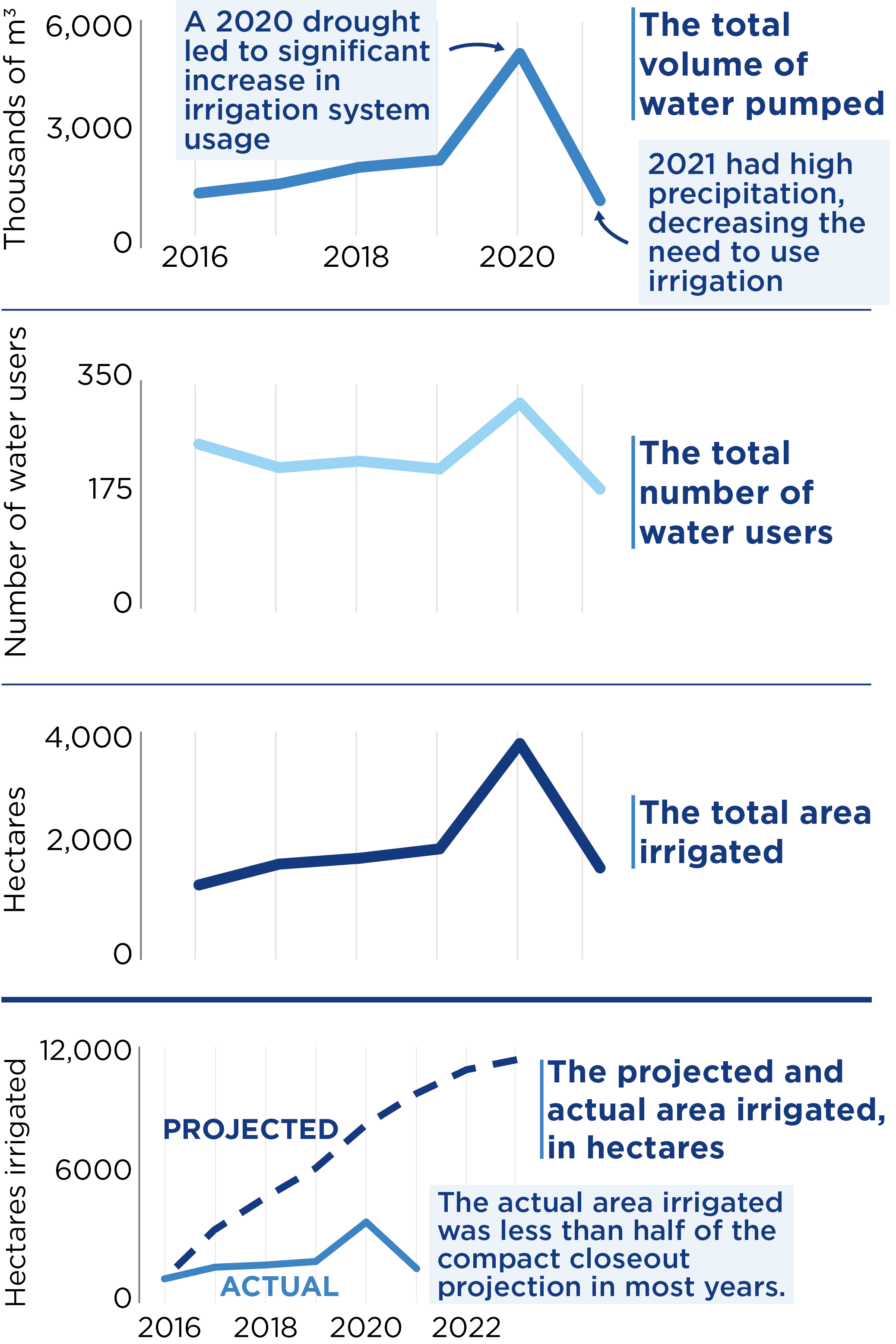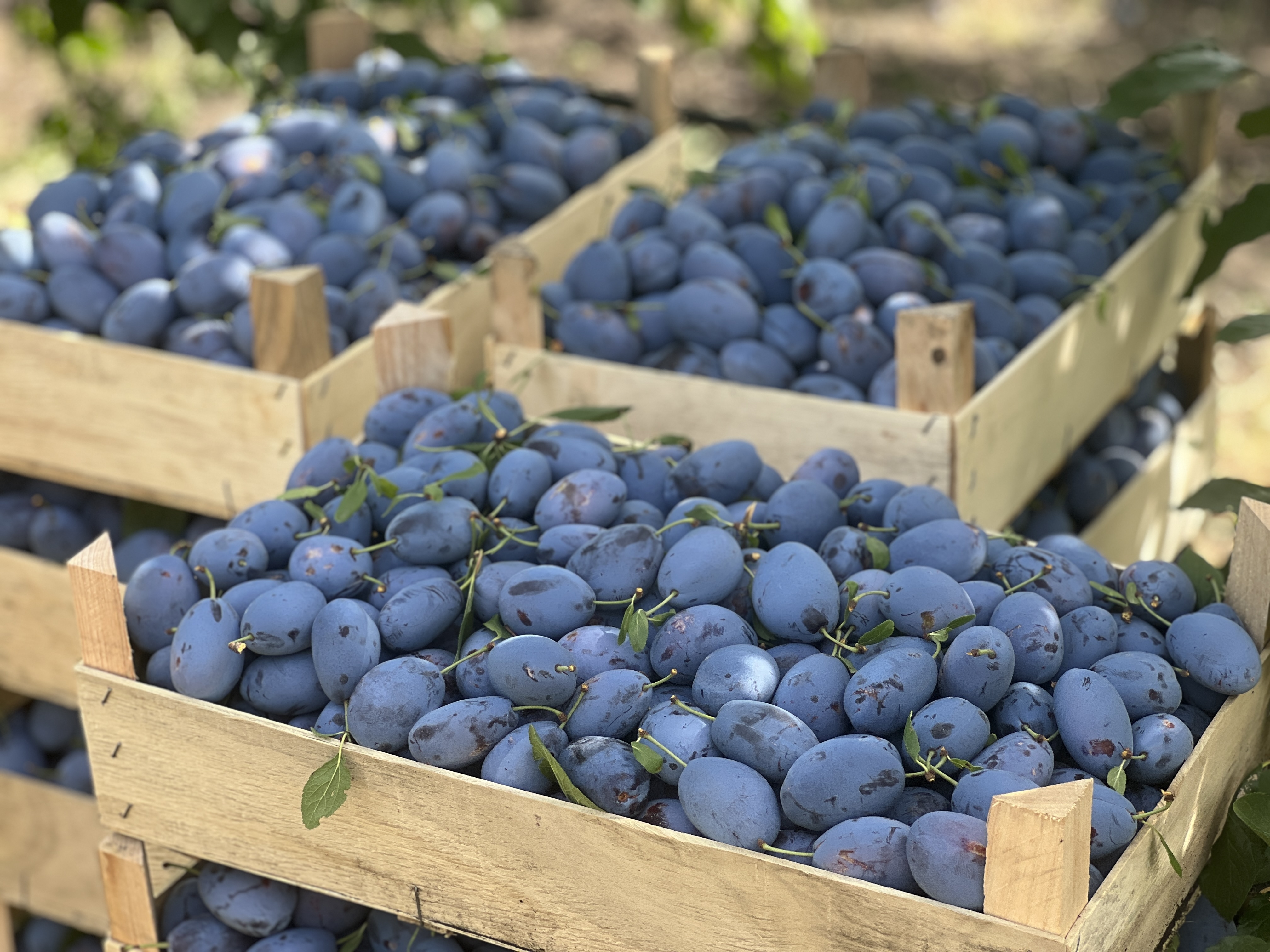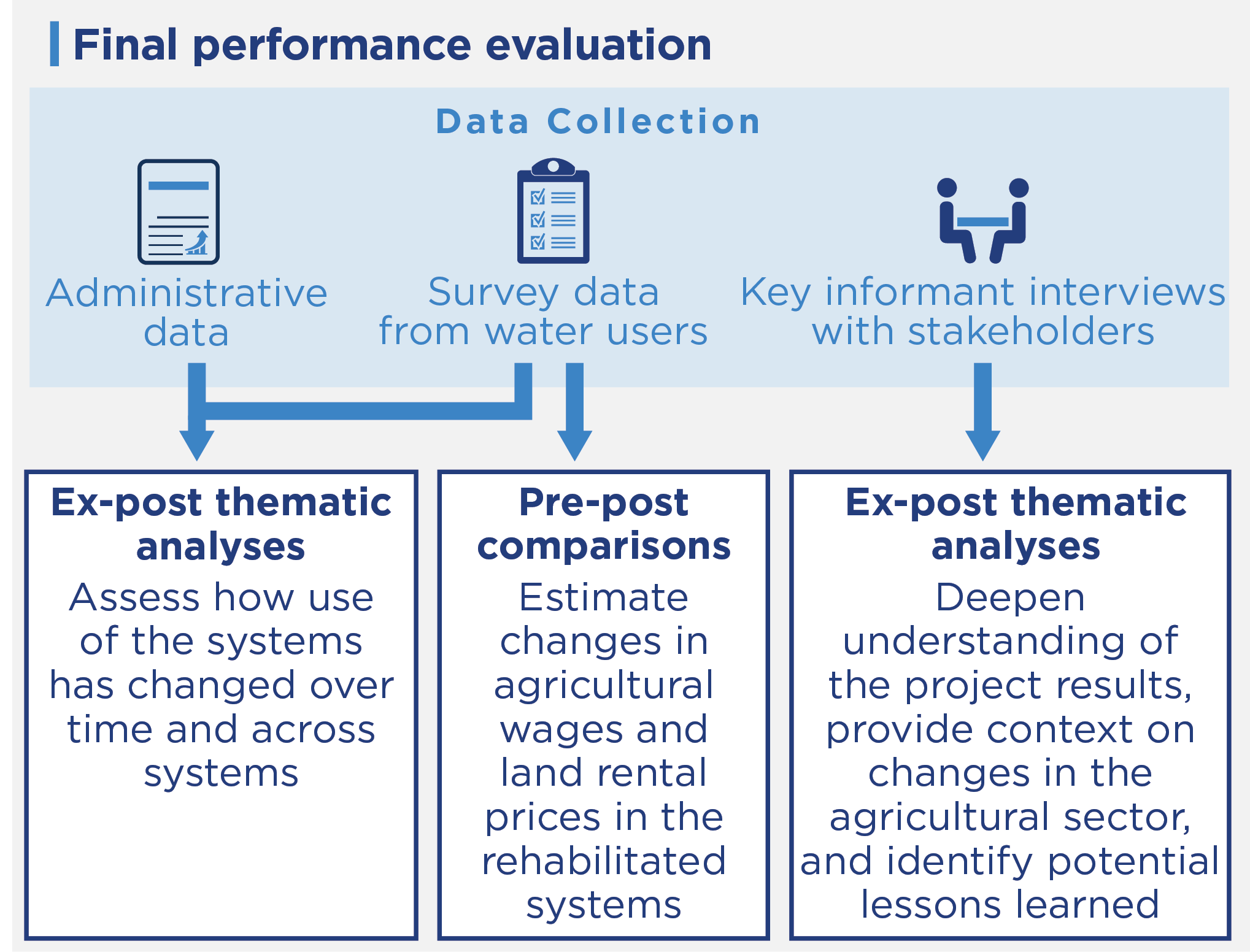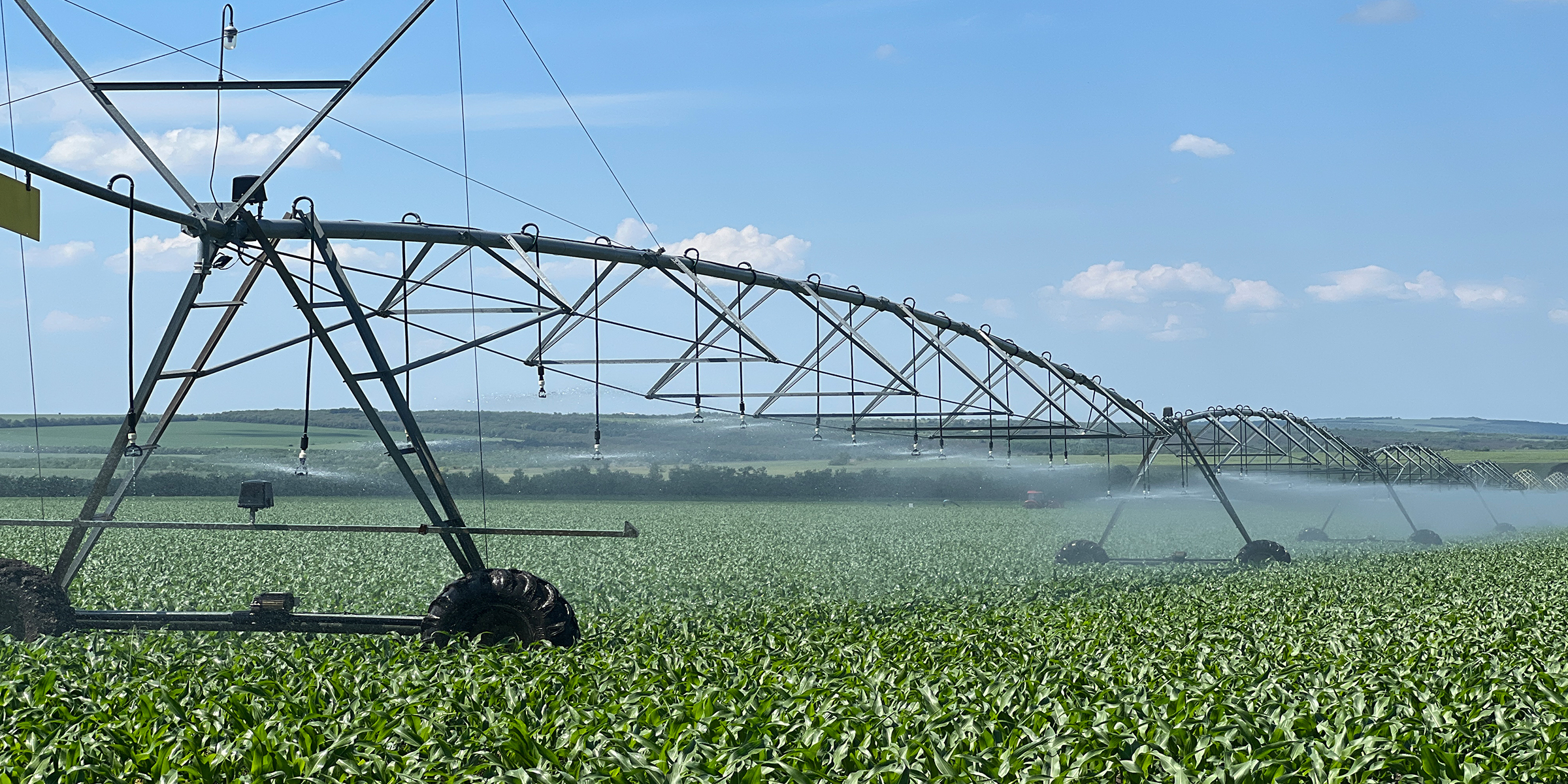Program Overview
MCC’s $259 million Moldova Compact (2010–2015) included the $129.4 million Transition to High-Value Agriculture Project which aimed to increase rural incomes by stimulating growth in high-value agriculture and to catalyze future investments in high-value agriculture. The project established water user associations and rehabilitated irrigation infrastructure in 10 centralized irrigation systems in rural Moldova. Other project activities were designed to upgrade production techniques, increase access to markets, and provide financing for post-harvest infrastructure and irrigation equipment.
Evaluator Description
MCC commissioned Mathematica to conduct an independent final performance evaluation of the THVA Project. Full report results and learning: https://evidence.mcc.gov/evaluations/index.php/catalog/166.
Download the Romanian translated evaluation brief.Key Findings
Irrigation and High-Value Agriculture
- The rehabilitated systems have been functioning well and were used to irrigate 3,790 hectares of land in 2020.
- However, irrigation use has been lower and more varied across seasons than projected, with a more limited transition to high-value agriculture (HVA) crops than expected.
Barriers to Irrigation and HVA Cultivation
- Most of the benefits of improved access to irrigation through the rehabilitated systems have accrued to a relatively small number of medium and large farms.
- Limited access to sales markets and lack of farm labor are the main barriers to broader use of irrigation and the transition to HVA crops.
Sustainability
- Project water user associations (WUAs) can be financially sustainable by using surpluses in high-demand years to cover deficits in low-demand years.
- However, some WUAs have limited reserve funds, and the extent to which WUAs can operate independently of post compact support is unclear.
- The project has spurred the establishment or reorganization of additional WUAs since the end of the compact.
Evaluation Questions
This final performance evaluation was designed to answer the following questions:- 1 Were the expected results—such as increases in irrigated area and high-value agriculture cultivation—in the project logic realized? If not, why not? How did different program activities contribute to the results that were realized?
- 2 How did the project affect land ownership, leasing, and land values?
- 3 How are the results from the project distributed across groups?
- 4 Are there indications that some of the long-term outcomes will be realized?
Detailed Findings
The findings of the final evaluation report build on the interim evaluation report results published in 2019.
Irrigation and High-Value Agriculture
Most of the 10 rehabilitated irrigation systems have operated without any major functionality issues through 2021. Further, most water users have been satisfied with water user association (WUA)-provided irrigation services. The volume pumped, number of water users, and area irrigated in the rehabilitated systems grew gradually between 2016 and 2019. Larger increases in 2020 (a drought season) were reversed in 2021 (a high-precipitation season), reflecting the strong dependence of irrigation use on seasonal precipitation patterns. Despite the substantial increase in irrigation use in 2020, the area irrigated (3,790 hectares) and area of irrigated high-value agriculture (HVA) (2,341 hectares) reached only about half of the compact closeout projection for 2020.Barriers to Irrigation and HVA Cultivation

Biggest perceived barriers to HVA cultivation
Sustainability
WUA directors believe that their WUAs can achieve financial sustainability by using surplus revenues from high-demand years to cover deficits in low-demand years. However, several WUAs were concerned that this financial model had left them with limited reserve funds for further infrastructure improvements or major repairs.
Harvested Moldovan plums stacked in open wooden crates.
Economic Rate of Return
MCC considers a 10% economic rate of return (ERR) as the threshold to proceed with investment.While the evaluator did not recalculate the ERR, they provided feedback on the validity of the MCC-produced closeout ERR (-5.5%) in light of the evaluation findings.
The area irrigated in the rehabilitated systems—which is directly connected to the estimated benefits of the project—has fallen short of the compact closeout cost-benefit analysis projections. This suggests that the ERR is likely lower than that estimated at compact closeout.
MCC Learning
- Producers’ commitment to irrigation should be better assessed and encouraged, potentially by requiring an up-front contribution to the improvements of the irrigation systems.
- Market linkages should be identified and strengthened early on to support the transition to high-value agriculture.
- Shifting management of water from the government to an association of water users was effective.
- Post compact support to the WUAs was critical.
- The intended users of irrigation should have been clearer up-front and documented in the project logic.
Evaluation Methods

Administrative Data from WUAs. Since 2018, the evaluator and its Moldovan partners have collected administrative data annually from the 10 project-established WUAs. Together, these data cover the period 2015–2021, six full annual seasons since rehabilitation was completed, and enable an assessment of how use of the systems has changed over time and across systems. These data also include information on WUA membership and WUA finances, which were used to assess WUA sustainability.
Survey Data from Water Users. In 2021, the evaluator and its Moldovan partners conducted a survey of all water users in the rehabilitated systems in the 2020 agricultural season. Nearly all of the more than 300 water users responded to the survey. WUAs were also able to provide limited information on most nonrespondents. These data provide information on the characteristics of water users and their use of the rehabilitated systems five full annual seasons after rehabilitation was completed.
Interviews with Key Stakeholders. In 2021 and 2022, the evaluator and its Moldovan partners conducted more than 120 interviews with a range of informants. These included farmers and WUA management in all 10 project systems, project participants outside these systems, farmers and local government authorities in 6 similar but unaffected comparison systems, farmers and WUA management in 6 non-project systems in which WUAs were also established, and government officials and other high-level stakeholders. These interviews were designed to deepen understanding of the project results, provide context on changes in the agricultural sector in Moldova more broadly, and identify potential lessons learned that could be applied to future programs.
2023-002-2820


